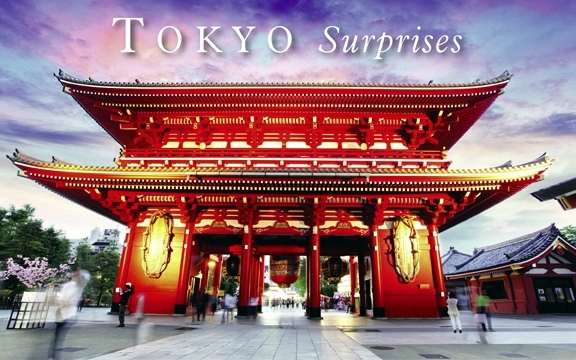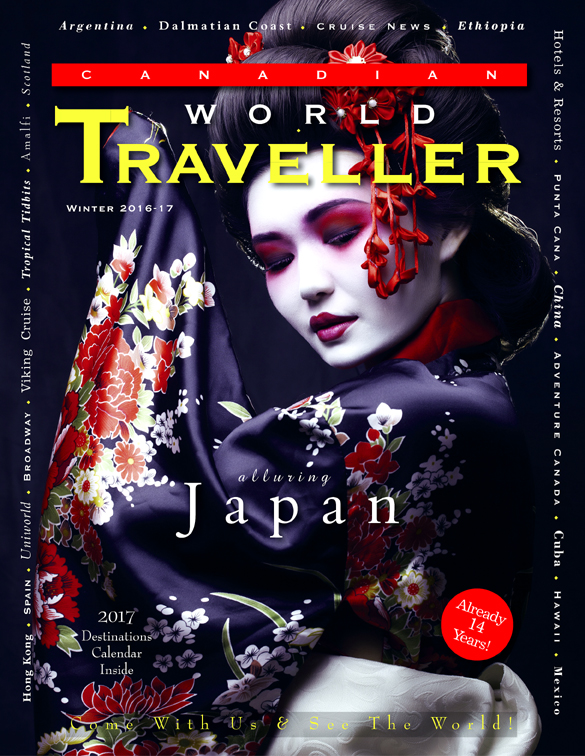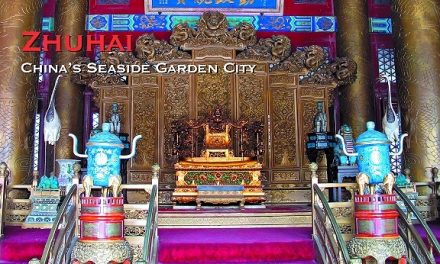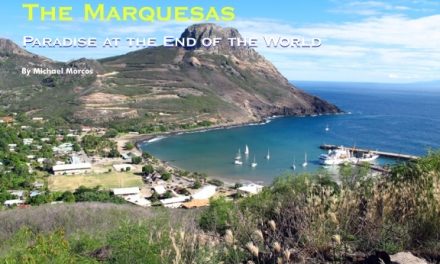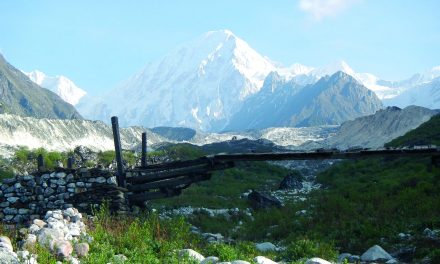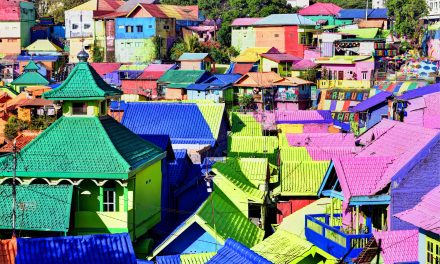Japan
Tokyo Surprises
Article & Photography by Steve Gillick

Noboru Shibata set the sashimi platter before us at Wasuke, his seafood Izakaya located in Tokyo’s Kappabashi district. The colourful arrangement verged on symmetrical perfection, with delicate, meaty slices of mackerel, tuna, octopus, yellowtail and Kuro Soi (Black Rock Fish) interspersed between small mounds of white ginger, green wasabi, radish and seaweed, with garnishes of hojiso (perilla), two tiny red Japanese maple leaves, and even a small yellow flower.
When asked about the visual masterpiece, the Chef revealed that when he was beginning his career nearly 55 years ago, he studied not only Ikebana (the Japanese art of flower arrangement) but also the symbolism and strict protocol of the tea ceremony. He noted that when a dish was presented to the client, the visual appeal should overwhelm the senses and enthusiastically place the taste buds on notice that something special was about to happen.
And then, on cue, he brought out a decorated, antique, ceramic tokkuri (sake flask) with a small bird on top, and filled our cups with Matabei, a clear, dry, delicious sake from Fukushima Prefecture. As he set the tokkuri upright, the little bird emitted a whistling sound, as it had done for over 150 years.
Tokyo surprises come in all shapes and sizes and our visit to Wasuke, probably the fifth time we’d eaten there over the past three years, was only one example. In Tokyo’s Izakayas, the term ‘counter intuitive’ refers to the client knowing that the counter is where all the action takes place: conversations with the chef, food preparation and chatting with other diners even when you don’t speak Japanese and they don’t speak English.
Knowing that I’d been to Tokyo a number of times, a friend asked if I’d be bored seeing some of the same sights again. I suggested that in Tokyo there are always new things to discover, and each visit provides an opportunity to indulge in one’s own special travel interests, whether its photography, crafts, antiques, food, temples and shrines, history, shopping, fashion, electronics, food or sake.
In the Asakusa district, at Senso-ji, which is the oldest temple in the city, the crowds start to converge early in the morning. Many head straight to the Jokoro, the giant incense burner in front of the main temple building (Hondo), and waft the smoke toward and around their head to welcome good luck, good health and for students, good marks in school. Escaping from the crowds is actually easy, as there are a number of small green areas on the temple grounds that are home to guardian spirits at entrance gates, red-bibbed Jizo statues (protectors of travelers and children), contemplative Buddha’s, and even the oldest stone bridge in the city, dating to 1618, under which giant, colourful Koi (carp) poke their heads above the water looking for food.
The top floor or the Tourist Information Centre, across the street from the Temple’s iconic Kaminarimon Gate, provides visitors with a great view of the entire temple complex. The building, designed by Kengo Kuma reflects the architect’s love of nature-in-the-city with wood used throughout, seemingly in harmony with the origin of the name ‘Asakusa’; literally meaning “Shallow weeds”. Another great view of the area can be appreciated from the Asakusa View Hotel, about a 15 minute walk away.
While temples can impart a sense of meditative, reflective comfort, a visit to the East Gardens of the Imperial Palace can have the same effect. Entrance is free to the grounds where the moat and remaining walls of the former Edo Castle can be seen. Past the trees and the bamboo grove lies a beautiful Japanese garden where paths and a bridge cross over a Koi-filled pond that perfectly reflects the trees. As one can imagine, the autumn is a very rewarding time to go. And for birders, this is one of the prime spotting areas in the city with Grey Herons, Egrets, Mute Swans, grebes, wagtails, coots, sparrows and a variety of colourful ducks. And if time permits, a sojourn around the entire perimeter of the Imperial grounds (roughly two hours), showcases the red Ministry of Justice building dating to 1895, the National Diet building where Japan’s legislature is housed, the British Embassy, parks, statues, flowers and even more birds swimming in the Imperial moat.
First time travelers to Tokyo seem disappointed when they learn that Mt. Fuji is just over 100 kilometers to the south west of the city. The proximity of the holy mountain (mythology holds that Mt. Fuji was the home of an important Shinto deity) to the city of Edo, was one of the reasons it became ‘Tokyo” or the Eastern Capital. On days when the sky is clear, Mt. Fuji can be seen shimmering in the distance from the twin observation decks of the Tokyo Government Metropolitan Building in Shinjuku. It’s also visible from the 333 meter Tokyo Tower (inspired by the Eiffel Tower but 13 meters higher) and also from the 451.2 meter high observation floor of the Tokyo Sky Tree (the tower is 634 meters in total).
But our goal was to go higher and a Tokyo Sky Cruise seemed to be the obvious solution. The service, run by Excel Air Service at the Urayasu Heliport near Tokyo Disneyland, provides 15 minute twilight and night journeys over Tokyo for up to 8 people, as well as longer customized flights that bring visitors up close and personal with Mt. Fuji.
After the appropriate safety instructions, we boarded the twilight cruise at 4:30 pm (this was late November) and lifted off for a spectacular ride. Right away we saw the Disneyland site, all lit up. In the distance, what looked like an orange Christmas tree turned out to be the Tokyo Tower, and further afield was the Tokyo Sky Tree, illuminated in “Sky Tree White’ an original colour designed to represent harmony with the surrounding scenery. Below us the Sumida River cut a swath through the city while in the distance we could barely make out the lights of Shinjuku (one of the major shopping, dining and hotel areas), Akihabara (known for its electronic stores), and Rappongi (shopping malls, music clubs and office towers). We flew around the Sky Tree to ensure that everyone on board could take all the photos they pleased, and then as the sky darkened, we headed back to the heliport. While we didn’t see Mt. Fuji, we experienced Tokyo from a perspective that few visitors get to see.
And Tokyo surprises seem to be never ending. One night we researched Orihara, a standing sake bar with a selection of over 150 seasonal sakes. On another night we dined on ultra-fresh seafood at “Sushi no Dalihan” in the Yoyogi district, which turned into another memorable izakaya dining experience. And for those seeking to fulfill their own special interests there is Kabuki and Noh theatre, the Samurai Museum, hundreds of small neighbourhoods to explore, markets, department stores, art galleries, city parks and more.
As travelers seek to connect with each destination they visit, Tokyo makes it easy with so much variety. The wonderment and surprises encountered equate to travel value, making a Tokyo experience great for the pocket book and soothing for the soul.
www.gotokyo.org/en
Click on cover to view published article

